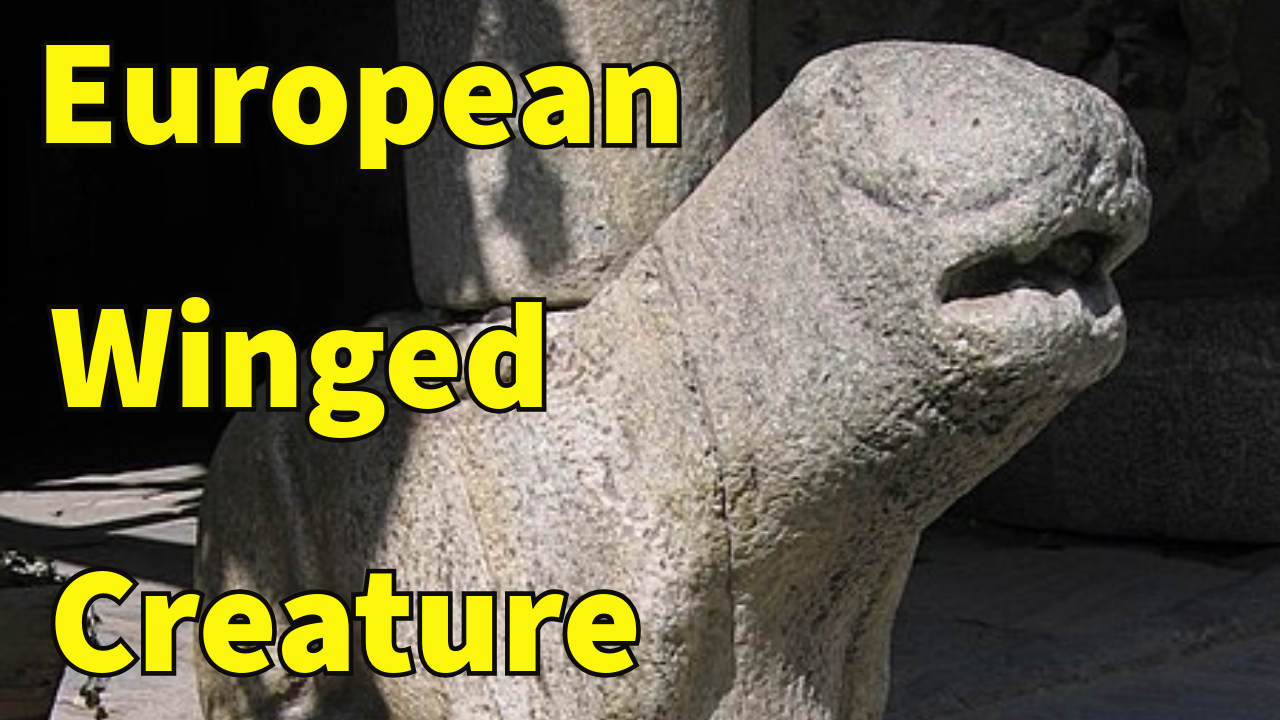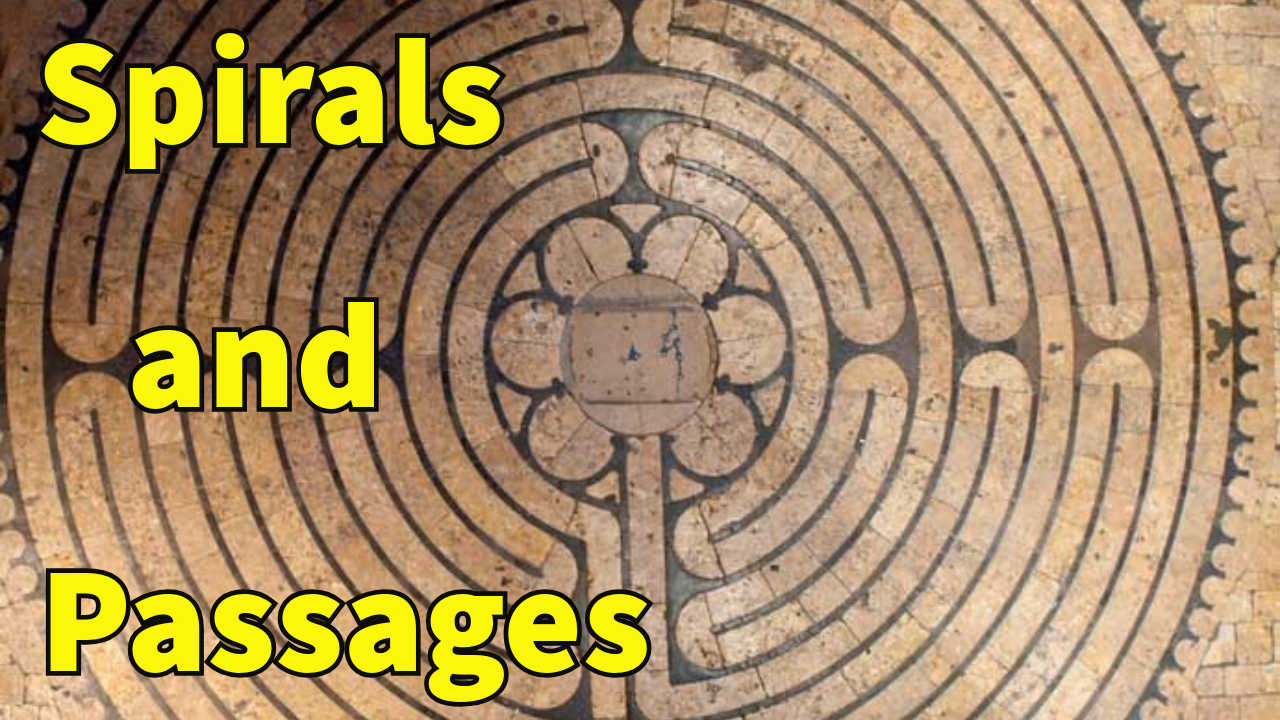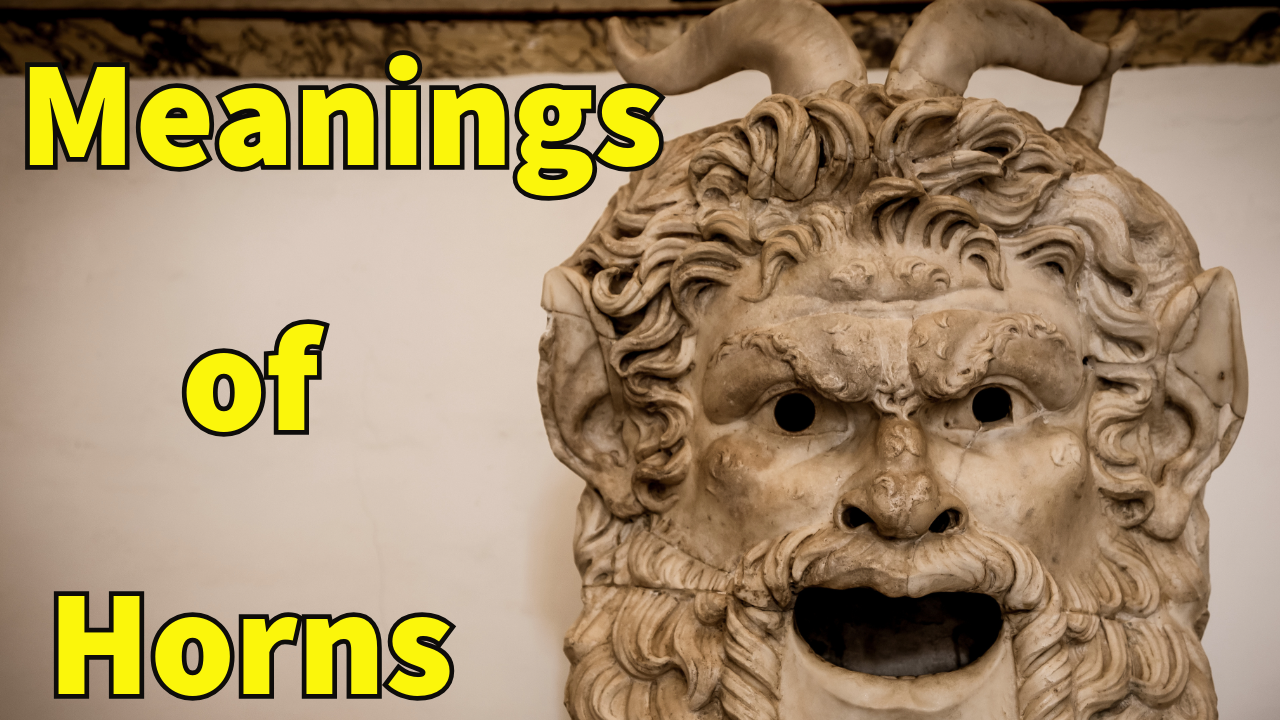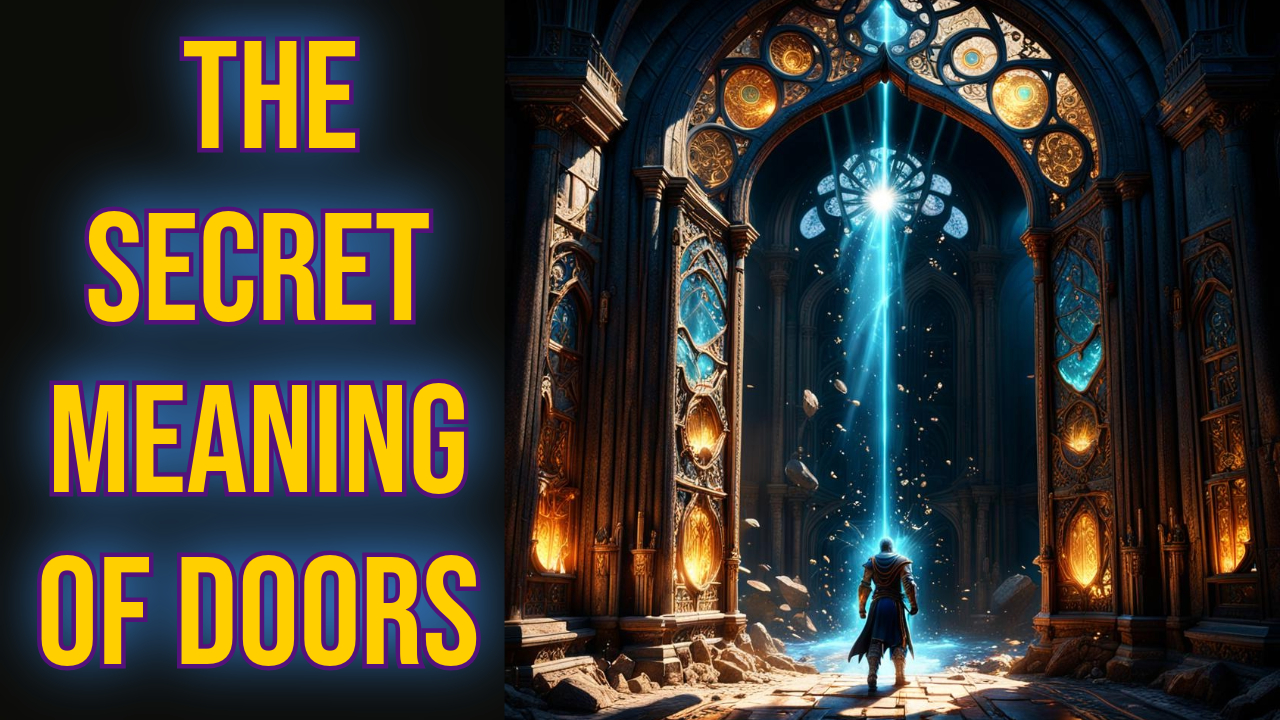
La Coulobre, often translated as “dragon” or “serpent,” is central to the legend associated with the village of Fontaine-de-Vaucluse, southern France, with a cluzeau (a type of well or spring) called “the hole of La Coulobre”, still visible along the banks of the Dordogne river.
The village in which the spring is located was called “Vallis Clausa” (“closed valley”) in Latin, because of its topographical position. This in time became “Vaucluse”, from which the spring takes its name. In the Provençal dialect is called Fònt de Vauclusa, “the spring of the closed valley.”
According to local folklore, La Coulobre was a fearsome dragon that terrorized the region. This malevolent creature, described in various accounts as having a serpentine body and a menacing demeanor, was said to be both a physical and symbolic representation of chaos and destruction.
It was a winged creature, often depicted as a giant salamander, with a fetid breath. It was feared for its ability to terrorize the countryside, devouring young children and spreading disease.
She coupled with dragons that then abandoned her, forcing her to raise the small black salamanders to which she gave birth, on her own . She was desperate for a new husband and a father for her children, but her ugliness repulsed all suitors.
The Dragon’s Reign of Terror
The legend describes La Coulobre as a creature of immense power and malevolence. It was said to reside in the dark depths of the spring’s subterranean river system, emerging only to wreak havoc on the nearby inhabitants.
The dragon’s presence was marked by mysterious and disastrous events—cattle would disappear, crops would not grow, and the land would suffer from unnatural droughts. The Fontaine de Vaucluse, with its powerful flow and enigmatic depths, was believed to be La Coulobre’s lair.
The people of Vaucluse lived in constant fear of her. The dragon’s wrath was thought to be linked to the mysterious and unpredictable nature of the spring itself. The locals believed that the beast’s influence extended over the spring, controlling its flow and using it as a means to assert its dominance.
The Heroic Struggle
The legend takes a dramatic turn with the arrival of a heroic figure determined to vanquish La Coulobre and bring peace to the region. This hero is often depicted as a brave knight or a noble warrior, who, armed with courage and skills, embarks on a perilous quest to confront the dragon.
The hero’s journey is fraught with challenges, as he navigates the treacherous terrain of the Fontaine de Vaucluse, and delves into the dark and labyrinthine passages of the spring.
The confrontation between the hero and La Coulobre is the climax of the legend. The battle is described in vivid and dramatic terms, with the hero eventually emerging victorious. The dragon, defeated and slain, is said to have been driven away or killed, with its body either sinking into the depths of the spring or being cast out to prevent any further menace.
With La Coulobre vanquished, the region was said to experience a period of restoration and peace. The Fontaine de Vaucluse, once associated with fear and destruction, was now seen as a symbol of renewal and hope.
The spring continued to flow, but its waters were no longer tainted by the dragon’s malevolent influence. The land flourished, crops grew, and the village thrived.
Saint Véran and La Coulobre
A parallel legend tells that Saint Véran, bishop of Cavaillon, rid the Sorgue of a horrible Drac, a devil or dragon, La Coulobre, striking it down with his staff. This event is commemorated by a sculpture on the church square, depicting Saint Véran killing the beast.
The Sorgue is a river in Southeastern France. Its source is near the town of Fontaine-de-Vaucluse. It is the biggest spring in France and the fifth biggest in the world.
Saint Veranus of Cavaillon (died c. 590) was a French Saint, with a cultus in Italy.
Gregory of Tours writes of miracles performed by Veranus, including the expulsion of a dragon. He is also remembered as a leader in charitable works and as a patron of local monasteries, not only in France but also in Italy, particularly in the city of Albenga, where he was instrumental in the conversion of the people to Christianity.
There are various theories about the name La Coulobre:
It could be derived from the Latin word coluber (snake).
The Drac is a Ligurian divinity of tumultuous waters and the Coulobre owes its name to two Celto-Ligurian roots: Kal (stone) and Briga (hill). This is the cliff overlooking the spring which still holds the Vache d’Or (Golden Cow), the site of an ancient pastoral religion celebrating the strength and form of water and stone.
In antiquity it was a place of ritual offerings.
Petrarch’s Encounter
In the 15th century, the Italian poet Petrarch (Petrarca), reportedly encountered La Coulobre while walking along the Sorgue river with his beloved Laure.
The monster’s pestilential breath allegedly killed Laure, and Petrarch never recovered from the encounter.
Historical and Geological Background
The Fontaine de Vaucluse is a karst spring, where the water emerges from a subterranean river system.
The sheer volume of water, which can vary dramatically with the seasons, contributes to the spring’s impressive flow.
The site is nestled in a picturesque valley and is surrounded by lush greenery and towering cliffs, adding to its mystique.
This natural wonder has long been a source of inspiration and intrigue, both scientifically and culturally. Its unique features and the surrounding landscape have made it a significant location for geological study and artistic representation. But it is the legend of La Coulobre that truly enriches its lore.
In a nearby region, an Occitan legend tells of a huge winged reptile with an enormous mouth, horns, ears and claws that ended up in a druid’s hiding spot. It is said that the creature was so large that it attacked people and cattle, abducting them to devour them in its cave.
It was said that La Coulobre’s colossal force was behind the creation of the dangerous passage known as the Saut de la Gratusse, where whirlpools and strong currents led many a sailor to their untimely death.
Tale of the Nymph
A different tale recounts the story of a minstrel who fell asleep on the way to the spring and saw a nymph appear. She led him to the edge of the spring, which opened to let them descend to a meadow strewn with supernatural flowers.
The nymph showed seven diamonds to the minstrel. By lifting one of them, she made a powerful jet of water gush out. “Here,” she said, “is the secret of the spring of which I am the guardian. To make it swell I remove the diamonds. With the seventh, the water reaches the fig tree, which drinks only once a year.”
Then, she woke up the minstrel and disappeared.
Cultural and Symbolic Significance
The legend of La Coulobre and the Fontaine de Vaucluse is more than just a local story – it reflects broader cultural and symbolic themes.
Dragons and serpents are common motifs in mythology across various cultures, often representing chaos, danger or evil that must be overcome by a hero.
In French folklore, La Coulobre is part of a tradition of dragon legends that emphasize the importance of courage and the role of heroic figures in restoring balance.
These stories often serve as allegories for real-life struggles, highlighting the virtues of bravery, perseverance, and moral integrity.
The Fontaine de Vaucluse, with its mysterious and powerful spring, provides a fitting backdrop for such a narrative.
Moreover, it has become a symbol of the natural beauty and mystical allure of the region. The spring’s dramatic flow and the surrounding landscape evoke a sense of wonder and reverence, enhancing the impact of the story.
The Legacy of the Legend
Today, La Coulobre continues to captivate the imagination of visitors and locals alike.
The Fontaine de Vaucluse remains a popular destination for those seeking to experience its natural beauty and to explore the rich cultural heritage associated with it.
The legend has been preserved through various forms of storytelling, including literature, art, and local traditions.
It also highlights the enduring power of folklore to shape our understanding of natural landscapes. The story of the dragon and the hero reflects the human desire to find meaning in the natural world and its intricate relationship with it.
The legend underscores the idea that natural phenomena, such as springs and rivers, are not just physical entities, but also vessels of deeper symbolic meanings, standing as a testament to this interplay between the natural and the mythological.
The legend of La Coulobre also serves as a potent symbol of the triumph of good over evil. The hero’s victory over the dragon represents the overcoming of darkness and chaos, restoring order and harmony to the land.
This narrative resonates with timeless themes found in folklore and mythology, illustrating the universal struggle between heroic valor and destructive forces.
This essay provides a comprehensive look at the Legend of La Coulobre and its significance, exploring both the mythical narrative and its cultural impact.
It is a fascinating and eerie figure, symbolizing the power of myth, and offering a glimpse into the rich tapestry of cultural and natural heritage that defines the region and European folklore.
What do you think of the legend of La Coulobre, dragons and winged creatures? Let us know in the comment section and share the post!!!
Video version here:
La Coulobre – Legend of a Winged Creature in European Folklore
Interesting sources, additional info, images, credits, attributions and other points of views here:
https://www.grandsudinsolite.fr/1013–the-legend-of-la-coulobre.html
https://en.wikipedia.org/wiki/Fontaine_de_Vaucluse_(spring)
https://en.wikipedia.org/wiki/Veranus_of_Cavaillon
https://en.wikipedia.org/wiki/Sorgue
https://en.wikipedia.org/wiki/Petrarch
PICS:
https://commons.wikimedia.org/wiki/File:Brooklyn_Museum_-_Fontaine_de_Vaucluse_-_Paul_Huet.jpg
https://commons.wikimedia.org/wiki/File:SaintV%C3%A9ran502.JPG
https://commons.wikimedia.org/wiki/File:Access_Fontaine_de_Vaucluse_by_JM_Rosier.jpg
https://commons.wikimedia.org/wiki/File:V%C3%A9ran_de_Cavaillon_(cropped).jpg
https://commons.wikimedia.org/wiki/File:Cavaillon-Cath%C3%A9drale-Mignard-Pierre.jpg
http://riviereesperance.canalblog.com/archives/2010/03/08/16567640.html
https://www.bordeauxwalkingtours.fr/en/the-legend-of-bergeracs-dragon/
https://vialucispress.wordpress.com/2019/05/25/the-saint-a-dragon-and-petrarch-too-dennis-aubrey/
https://pixabay.com/illustrations/book-adventure-snake-imagination-8794150
https://pixabay.com/illustrations/ai-generated-snake-reptile-head-7850729
https://pixabay.com/illustrations/lake-woman-goddess-of-lakes-7566031
https://pixabay.com/photos/snake-nature-reptile-wild-wildlife-2362212
https://pixabay.com/illustrations/photo-snake-reptile-species-fauna-7752725
https://pixabay.com/photos/nature-salamander-fire-salamander-3182879
https://pixabay.com/photos/spotted-salamander-water-lily-6020288
https://pixabay.com/illustrations/dragon-fire-pagan-epic-fantasy-8780168
https://pixabay.com/illustrations/dragon-mythology-english-myths-8800263
https://pixabay.com/illustrations/dragon-lake-fantasy-nature-beast-8520110
https://pixabay.com/illustrations/ai-generated-dragon-lizard-reptile-7852855
https://en.wikipedia.org/wiki/Petrarch#/media/File:Altichiero,_ritratto_di_Francesco_Petrarca.jpg
https://en.wikipedia.org/wiki/Petrarch#/media/File:Francesco_Petrarca01.jpg
https://pixabay.com/illustrations/medieval-castle-knight-st-george-8813015
https://pixabay.com/illustrations/black-dragon-dragon-fantasy-art-8808267




